Written by Sig Silber
HEADLINES –
– Heavy snow from parts of the Mid-Atlantic into New England through Wednesday morning
– The heavy rain winds down over parts of Northern California and the Pacific Northwest
– Light rain/freezing rain for parts of the I-95 corridor on Monday and into Coastal Maine on Tuesday.

This article provides continuous updates for a variety of Weather and Weather-Related Threats as well as a general weather forecast. These are “Live” maps that continually update. Please pay attention to the Mesoscale Events maps — Mesoscale Events are potentially life-threatening situations.
Please share this article – Go to the very top of the page, right-hand side for social media buttons. Also, feel free to send this email to anyone you feel will benefit from it.
For those interested in longer-term forecasts, we just published the new NOAA Seasonal Outlook and it can be accessed here.
Readers can scan through this article or jump to where they want to go via the links to the right. To get back to the Directory, hit the back arrow at the top of the URL bar on your screen. But in many cases, one of my Editors has graciously inserted a Return to Directory link to click so that is even easier. This is so high tech that I hardly believe it. |
|
CONUS Focal Points
Short Range Focal Points
Short Range Forecast Discussion NWS Weather Prediction Center College Park MD 251 AM EST Mon Feb 01 2021
Valid 12Z Mon Feb 01 2021 – 12Z Wed Feb 03 2021
…Heavy snow from parts of the Mid-Atlantic into New England through Wednesday morning…
…The heavy rain winds down over parts of Northern California and the Pacific Northwest…
…Light rain/freezing rain for parts of the I-95 corridor on Monday and into Coastal Maine on Tuesday…
Low pressure along the Mid-Atlantic Coast will slowly move northeastward to just off Maine by Wednesday morning. The system will produce snow from parts of the Ohio Valley into parts of the Northeast on Monday morning. On Monday evening, the snow will expand into Northern New England and continue over parts of the Northeast into Wednesday. Some rain will be along the northern Mid-Atlantic Coast too. Areas of rain/freezing rain is possible along the I-95 corridor from Washington D. C. to Philadelphia on Monday. Additionally, rain/freezing rain will develop over parts of Coastal Maine on Tuesday. Overnight Monday, the snow will begin to weaken over the Ohio Valley into parts of the Southern Appalachians. However, the snow will linger over the Central Appalachians into Wednesday morning.
In the meantime, a front approaching the Northwest will move onshore later Monday and advance eastward to the Northern Intermountain Region/Northern Rockies to Southern California by Wednesday. The system will produce rain and some high elevation snow over parts of the Pacific Northwest and parts of Northern California on Monday. When the front moves onshore overnight Monday, the snow levels will lower over the region as rain moves into Central California. On Tuesday afternoon, snow returns to California’s higher elevations and into parts of the Northern Intermountain Region by Tuesday evening. By Wednesday morning, the snow will move into parts of the Northern Rockies.
We try to keep this up to date but if is not you can find the updated version here.
When you click on this image it takes you to the SPC Fire Warning Page and you get a set of maps for Days 1, 2, 3 – 8, etc. You can then click on those for more detailed information. The map is a bit blurry as I tried to make it a bit larger than the map provided by NOAA but should be able to see where the current wildfire risks are. But if you click on this map, you will get to see three maps that show the risk for different time periods.
Thunderstorm Risk
This should play out something like shown in this 60 Hour Forecast Animation
Here is a national animation of weather fronts and precipitation forecasts with four 6-hour projections of the conditions that will apply covering the next 24 hours and a second day of two 12-hour projections the second of which is the forecast for 48 hours out and to the extent it applies for 12 hours, this animation is intended to provide coverage out to 60 hours. Beyond 60 hours, additional maps are available at links provided below. The explanation for the coding used in these maps, i.e. the full legend, can be found here although it includes some symbols that are no longer shown in the graphic because they are implemented by color-coding.

The two maps below break it down by day and may be easier to read.
Now, the Day One and Two CONUS Forecasts: These Maps Update Daily.
Day One CONUS Forecast | Day Two CONUS Forecast |
These graphics update and can be clicked on to enlarge. You can see where the weather will be | |
 | |
During the winter much of our weather originates in the Pacific. That is why we pay attention to the near-term history of storms arriving.
Temperature
A version that shows a 40 hour animation and some other views can be found here

– Return to Directory
Day 3 – 7 Hazards
US Day 3-7 Hazards Outlook
Valid Monday February 01 2021 – Friday February 05 2021
Hazards:
– Heavy precipitation across portions of the Mid-Atlantic and the Northeast, Mon-Tue, Feb 1-Feb 2.
– Heavy rain across portions of California and the Pacific Northwest, Mon, Feb 1.
– Heavy rain across portions of the Southeast, the Mid-Atlantic, the Southern Appalachians, the Ohio Valley, and the Tennessee Valley, Thu-Fri, Feb 4-Feb 5.
– Heavy snow across portions of the Northeast, the Central Appalachians, the Northern Rockies, the Mid-Atlantic, California, the Northern Great Basin, the Central Great Basin, the Pacific Northwest,
and the Southwest, Mon-Tue, Feb 1-Feb 2.
– Heavy snow across portions of the Central Rockies, the Central Great Basin, the Northern Rockies, the Northern Great Basin, and the Northern Plains, Tue-Wed, Feb 2-Feb 3.
– Heavy snow across portions of the Central Plains, the Central Rockies, the Central Great Basin, the Northern Plains, the Southern Rockies, the Southern Plains, and the Southwest, Wed, Feb 3.
– Heavy snow across portions of the Central Plains, the Middle Mississippi Valley, the Great Lakes, the Upper Mississippi Valley, and the Northern Plains, Wed-Fri, Feb 3-Feb 5.
– Flooding possible across portions of the Middle Mississippi Valley.
– High winds across portions of the Central Plains, the Central Rockies, the Northern Plains, the Southern Rockies, the Southern Plains, and the Southwest, Wed-Thu, Feb 3-Feb 4.
Detailed Summary:
The medium range period (Monday, February 1st to Friday, February 5th) contains a plethora of hazards from coast to coast with two main system impacting the Continental United States. Starting in the East on Monday, a low pressure system is expected to strengthen off the Delmarva Peninsula and very slowly move toward the northeast. Wintry precipitation will already be occurring across the Mid-Atlantic and will be in the process of spreading up the coast from Long Island to New England late Monday into Tuesday. There remains a relatively large spread on exactly how far inland the heavy snow reaches, but confidence is growing that enough snow will fall between northern Virginia and coastal New England to meet warning level criteria. A few locations may even approach a foot of total snowfall depending on where the pivoting band of heavy snow develops. This includes several major cities from Washington D.C. to Boston. Areas from southern Maryland to Delaware, as well as Cape Cod, will have the potential for a mixture of heavy rain and snow as warmer air infiltrates closer to the low pressure center. There also remains the possibility for gusty winds and coastal flooding from New Jersey to New England as strong east-northeast winds swing around the center of the storm. By Wednesday morning much of the snow should come to a gradual close across New England, with only gusty northwest winds to contend with.
Meanwhile, the next system to cross the Lower 48 will be responsible for heavy rain and mountain snow throughout much of northern California and the Sierra Nevada to start the week. Precipitation amounts will not be nearly as high as what was seen the last 5 days, but nonetheless more heavy snow is on the way. By Tuesday, impacts will reach the northern Rockies and Intermountain West in the form of higher elevation heavy snow. As upper level energy reaches the Plains by Thursday, cyclogenesis should occur across the central Plains as an area of low pressure develops. Heavy snow will be possible across the central Rockies and High Plains from northern Colorado to central Wyoming during this time frame. Strong winds will also accompany the system and associated Pacific cold front on Wednesday and Thursday from the Southern Rockies to Central Plains. Forecast models offer several possibilities as the storm tracks to the northeast across the Midwest and Great Lakes by Friday. The greatest probability for heavy snow from mid-to-late week remains across the eastern Dakotas, Nebraska, and into the Upper Midwest/Great Lakes region. It is also possible gusty winds could accompany this snow, but given the higher than average uncertainty an area was not added to the hazards graphic today. As the cold front pushes through the Lower Mississippi Valley on Thursday, heavy rain and thunderstorms may develop across the Tennessee Valley and Southern Appalachians by the end of the week. Rainfall amounts over an inch will be possible and could pose a slight flash flooding risk, particularly along the typical upslope regions of the southern Appalachians.
Temperatures across the Lower 48 will flip flop throughout the week, with below average temperatures in the eastern U.S. on Monday and Tuesday before flipping to above average to end the week. The opposite will be found across the central and western United States. In fact, high temperatures on Friday could be 10 to 15 degrees below average across the northern High Plains. An area highlighting much below average temperatures may be needed here during the next graphic update.
Across Alaska, a potent cold front will bring the potential for gusty winds early next week across southwest portions of the state. These gusts appear to remain below hazardous threshold at the moment, therefor no area was needed on the hazards graphic today. Otherwise, below average temperatures will be easy to find at the beginning of the period before moderating by Friday.
(This is updated only during the week) Note the first list is weather highlights, this list is hazards. Not sure there is that much of a difference but they come from two different parts of NOAA. The Day 3 – 7 Hazards List does not update on weekends. But it is still useful as it remains valid for the period of time it covers. Of course, all forecasts are subject to change. Later we show a map of the hazards. Perhaps we should show them together.
Click here for the latest complete Day 3 -7 Hazards forecast which updates only on weekdays. It includes the full discussion which I do not update in this article but only present the highlights.
– Return to Directory
Ski Snow Reports
New Feature – Ski Reports. (We may be a tad premature but not by much). It is difficult to find reports that auto-update on-screen (and they are very long) but these links will get you to them – If you have additional suggestions make them in the comments section after every GEI Article and we may add those links. We will try to not have too much overlap as that can add to the confusion.

We will update the above map weekly but more frequent updates can be obtained here.
Snow Forecasts.
Day 1

Day 2

Additional snow information can be found here and here.
We also include drought information in this section.


New December Drought Outlook

Seasonal Outlook Issued January 21, 2021
– Return to Directory
Tropical Events
I am replacing the large with three small maps but you can click on them to get larger versions. Even though they are small maps you should be able to tell if there is activity and If I see activity I will make the map where there is activity full size and when available add other related maps.
| the Central Pacific. | the Eastern Pacific | the Atlantic and the Gulf of Mexico |
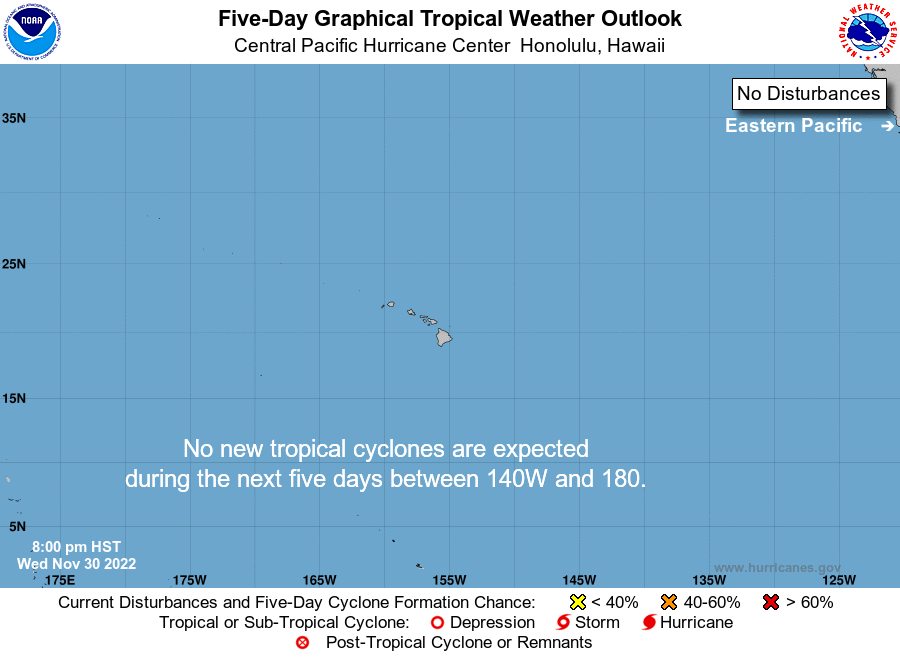 | 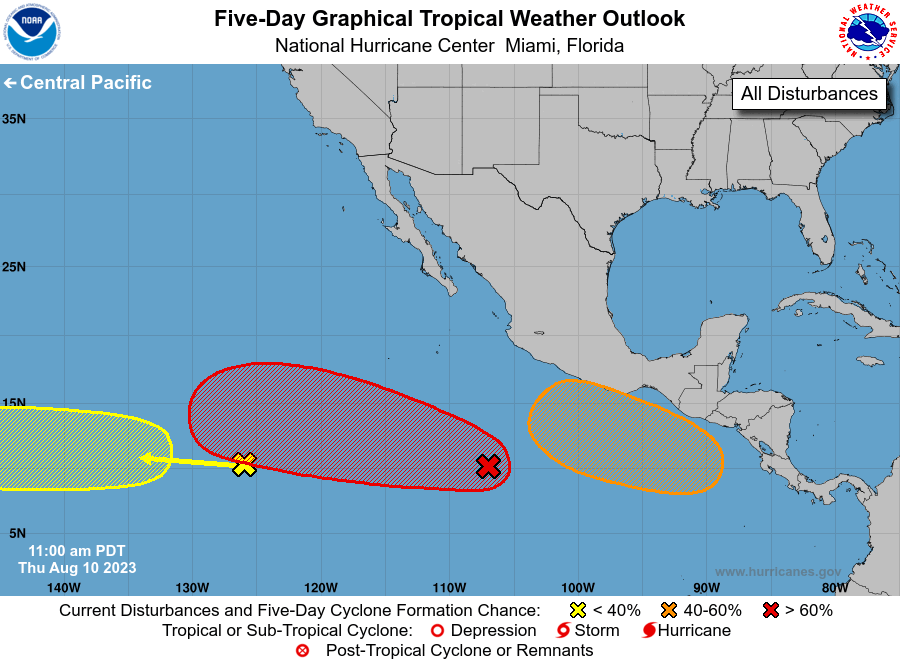 |  |
Atlantic and Gulf of Mexico
And the Eastern Pacific
Updates on individual named storms can be obtained here.
And the Western Pacific


Weekly Tropical Forecast

– Return to Directory
Intermediate-Term Weather Forecast
And shifting to the Alaska and CONUS Intermediate-Term Weather Forecast showing from left to right, Days 1- 5, 6 – 10, 8 – 14 and Weeks 3 – 4 You can click on these maps to have them enlarge, there are larger versions in the Addendum (More Weather the link is shown at the end of this section, and there are larger versions of these maps in the Addendum. Also, the discussions that go with these forecast maps can be found here (first two weeks) and here (Weeks 3 and 4).
First Temperature
And then Precipitation
For those interested in more detail, there are additional weather maps and information in the MORE WEATHER Addendum. The link to the Addendum is here. |
– Return to Directory
Mesoscale Events
The following map shows where mesoscale events are occurring or forecast. If you do not see any areas highlight on this map than there are no mesoscale events taking place or forecast. A mesoscale event is a very serious situation for a very small area and detailed information is provided for these events when they occur or are forecast. If a mesoscale event is shown, click on the map and more detail on the event will be shown.
Two different parts of the NWS issue this map and they are not always in agreement although they are pretty close. They (Norman Oklahoma and College Park Maryland) issue the alerts when they realize the need, so it is best to look on both maps and click one or both if you see areas highlighted.
This next map showing where “Headlines” have been issued for convection (and an animation of the recent movement of storms) should update and you should be able to click on to get additional details but if it does not update when you click on it, click here.
There is a slight difference between convection and thunderstorms. The below map shows where “Headlines” have been issued for Thunderstorms. You should be able to click on the map to get additional details but if it does not update, you can click here.
The map below shows the current wildfire risk which becomes more significant as we move into Summer. When you click on this image it takes you to the SPC Fire Warning Page and you get a set of maps for Days 1, 2, 3 – 8, etc. You can then click on those for more detailed information. The map is a bit blurry as I tried to make it a bit larger than the map provided by NOAA but should be able to see where the current wildfire risks are. But if you click on this map, you will get to see three maps that show the risk for different time periods.
– Return to Directory
Now the Day 3 – 7 Hazards Outlook Maps

The orange and red outlined areas are what is most concerning of the forecasted Day 3 – 7 Hazards. This graphic does not update during the weekend. There is a discussion that goes with this graphic and you can access that discussion here.
The following is provided to help the reader relate the maps to how NWS will describe an area of the U.S.

– Return to Directory
Now to our More Detailed Weather Report
This graphic is about Atmospheric Rivers i.e. thick concentrated movements of water moisture. More explanation on Atmospheric Rivers can be found by clicking here or if you want more theoretical information by clicking here. The idea is that we have now concluded that moisture often moves via narrow but deep channels in the atmosphere (especially when the source of the moisture is over water) rather than being very spread out. This raises the potential for extreme precipitation events.
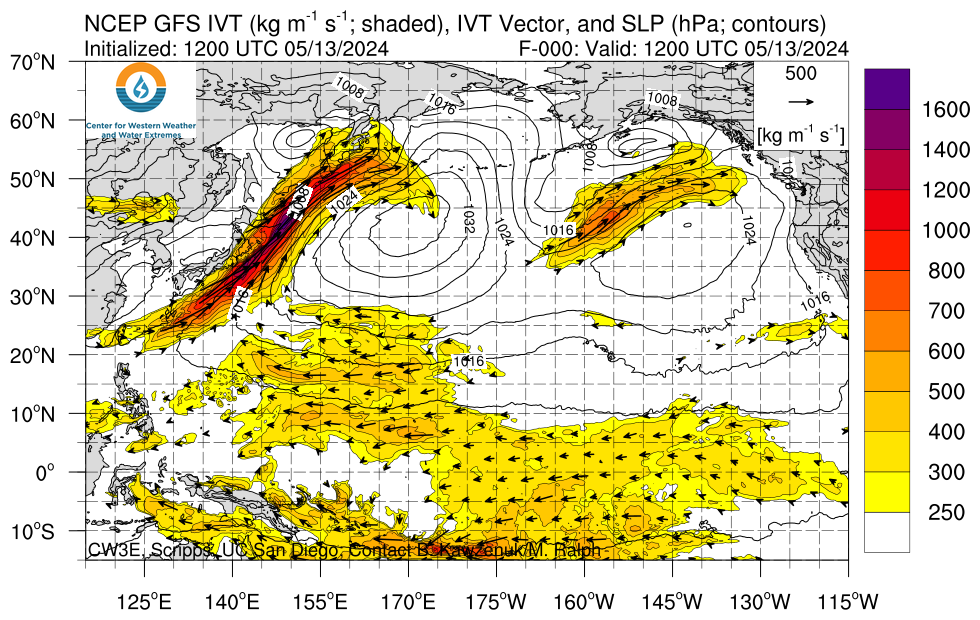
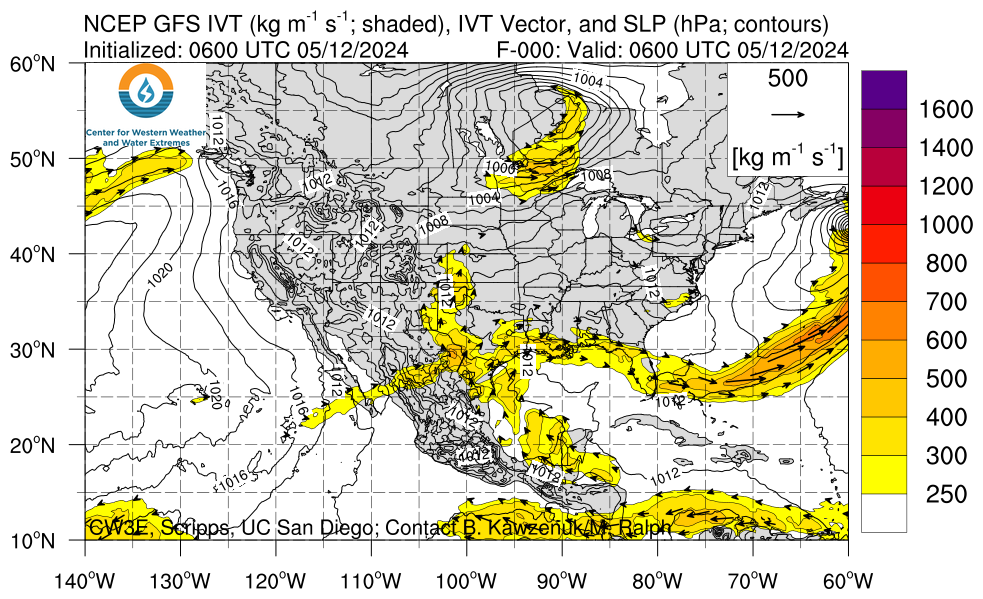
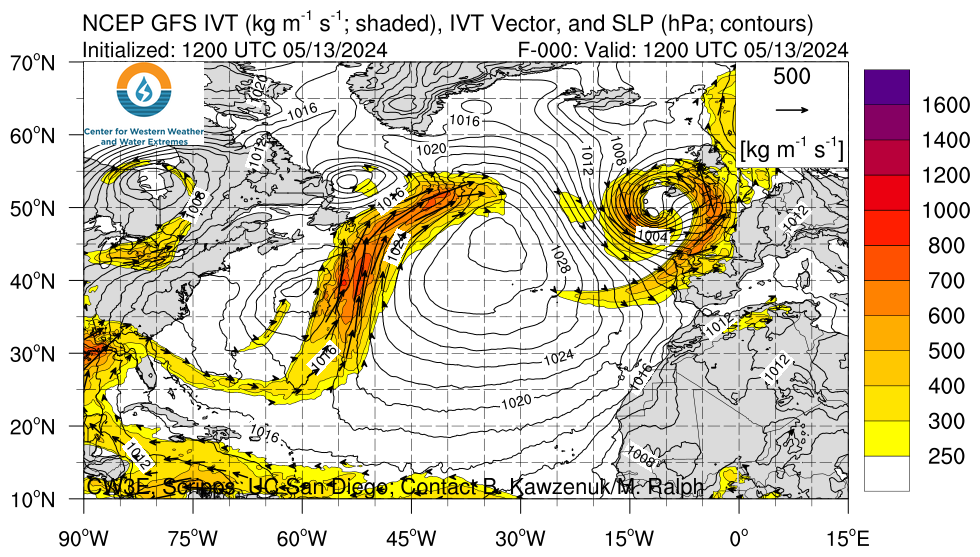
500 MB Mid-Atmosphere View
The map below is the mid-atmosphere 3-Day chart rather than the surface highs and lows and weather features. In some cases, it provides a clearer less confusing picture as it shows only the major pressure gradients. This graphic auto-updates so when you look at it you will see NOAA’s latest thinking. The speed at which these troughs and ridges travel across the nation will determine the timing of weather impacts. This graphic auto-updates I think every six hours and it changes a lot. Thinking about clockwise movements around High-Pressure Systems and counterclockwise movements around Low-Pressure Systems provides a lot of information.


| Day 3 Above, 6 Below | Day 4 Above,7 Below | Day 5 Above. |
 |  |  |
 |  |  |
Here are the precipitation forecasts. First the cumulative for Days 1 – 3

Then cumulative for Days 1 – 5
Then cumulative for Days 1 – 7

Now we look at the forecast for the Maximum Temperature three days out.
Looking ahead to next week.

– Return to Directory
Additional Tools to Obtain Watches and Warnings
| Current watches, warnings, and advisories issued by the agencies of the National Weather Service. Hazards should show up in the various maps but the below links will take you to all outstanding watches and warnings in each category which may include some categories not covered in the various maps or difficult to find. So if there is a category of interest, click on the appropriate link below. |
|
Below you will see a number of different maps that are updated in real-time, making this a “live” report. If a part of one or more of the maps shows an area that is highlighted, you can click on it and get the full current report. By having the reader click on these active situations rather than having GEI do so, you will not miss any events in which you might have an interest and which we had not noticed and the page will not get cluttered with warnings, etc that have since expired.
Our focus here is events that are likely to last in the range of six hours but there can be longer or shorter events that are addressed by the Storm Prediction Center which is the main source of the information in this article. Long-term major events like a Hurricane are more likely to be in a separate article. But that may not always be the case. Since in general, all the links on this page transfer you into the NOAA system, in order to get back into this article you need to either close the tab to which you were transferred or click back on the tab that has this article.
| Live Warning Maps which If Severe Weather is Shown can be Clicked on to get more detail about these events. If there is a current warning shown on the map, click on the map for additional information related to the event. | These maps are updated as risks are identified. |
| This is the current graphic showing any mesoscale discussions (MD’s) which are in effect over the contiguous United States. Please read the description of the purpose of our MD’s for further information. Details on all valid MD’s may be found on our Current Mesoscale Discussions page. |  |
| Convective Outlooks | |
|---|---|
| This is today’s forecast for organized severe thunderstorms over the contiguous United States. Please read the description of the risk categories for further information. You may find the latest Day 1 Outlook available as well as all Outlooks issued today online. | Today’s Outlook |
 | |
| This is tomorrow’s forecast for organized severe thunderstorms over the contiguous United States. Please read the description of the risk categories for further information. The latest Day 2 Outlook is available as well as all Outlooks that have been issued today. | Tomorrow’s Outlook |
 | |
| This is the day after tomorrow’s (day 3) forecast for organized severe thunderstorms over the contiguous United States. Please read the description of the risk categories for further information. The latest Day 3 Outlook is available as well as all Outlooks that have been issued today. | Day 3 Outlook |
 | |
| This is the day 4-8 forecast for organized severe thunderstorms over the contiguous United States. The latest Day 4-8 Outlook is available as well as all Outlooks that have been issued today. Note: A severe weather area depicted in the Day 4-8 period indicates a 30% or higher probability for severe thunderstorms (e.g. a 30% chance that a severe thunderstorm will occur within 25 miles of any point). | Day 4-8 Outlook |
 | |
| The Thunderstorm Outlooks depict the probability of thunderstorms across the contiguous United States in 4 or 8 hour time periods. The probabilistic forecast directly expresses the best estimate of a thunderstorm occurring within 12 miles of a point. The three probabilistic forecast thresholds are 10, 40, and 70 percent. | Thunderstorm Outlook |
 | |
| Fire Weather Outlooks | |
| This is today’s forecast for organized wildfires over the contiguous United States. Please read the description of the risk categories for further information about this product. | Today’s Outlook |
 | |
| This is tomorrow’s forecast for organized wildfires over the contiguous United States. Please read the description of the risk categories for further information about this product. | Tomorrow’s Outlook |
 | |
| This is day 3-8 forecast for organized wildfires over the contiguous United States. Please read the description of the risk categories for further information about this product. | Day 3-8 Outlook |
 | |
























